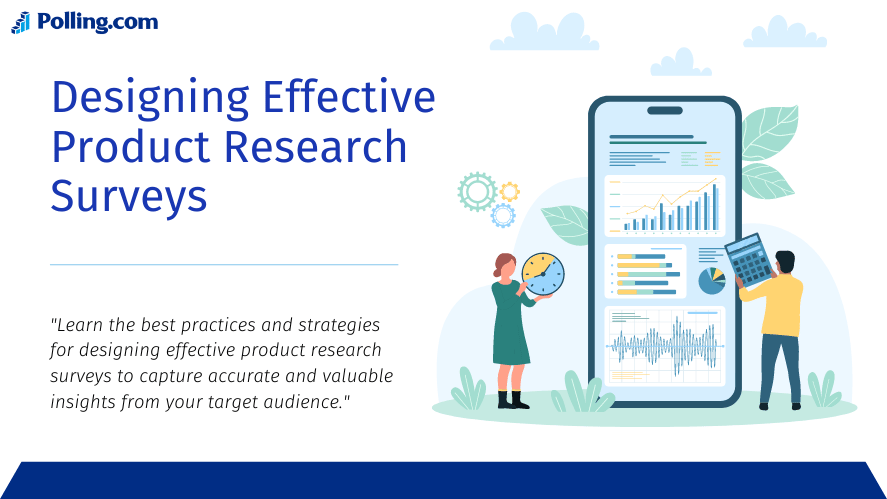
Ultimate Guide to Product Research Surveys for Market Analysis
Understanding what your customers want is essential in today’s competitive market. But how can businesses learn more about their customers? The answer is through product research surveys. These surveys collect information about customer behavior, preferences, and opinions. This data helps companies develop better products and create effective marketing strategies.
Overview of Product Research Surveys
Product research surveys are questionnaires used to gather data from customers or potential customers. These surveys provide insights into customer needs and help identify gaps in the market. There are different types of surveys, including online surveys, phone surveys, and in-person interviews. Each type serves a specific purpose in collecting data.
1. Types of Product Research Surveys

There are several types of product research surveys, each serving a unique purpose.
a. Exploratory Surveys
Definition and Purpose:
Exploratory surveys help companies explore new areas and gather initial information. They are used to understand broad trends, customer needs, or market gaps.
When and Why to Use Them:
Use exploratory surveys when launching a new product or entering a new market. They help identify what customers want and where current products fall short.
Examples of Questions Typically Asked:
- What problems do you face with existing products?
- What features would you like to see in a new product?
- How do you currently solve [specific problem]?
b. Descriptive Surveys
Definition and Purpose:
Descriptive surveys collect detailed information about a specific group. They help businesses understand customer demographics and preferences.
How They Help in Understanding Consumer Demographics and Preferences:
These surveys provide quantitative data, like how many people prefer a certain product feature. This helps businesses target the right audience and tailor their products.
Common Methodologies and Tools Used:
- Multiple-choice questions for clear choices.
- Rating scales to measure satisfaction.
- Demographic questions to understand the audience better.
c. Causal Surveys
Explanation of Causality in Surveys:
Causal surveys aim to find cause-and-effect relationships. They explore how one factor influences another.
How These Surveys Help in Determining Cause-Effect Relationships:
For example, they can show how changing a product’s price affects customer satisfaction.
Designing Effective Causal Surveys:
- Control Groups: Use these to compare different variables.
- Randomization: Randomly assign participants to reduce bias.
- Follow-up Questions: Ask detailed questions to understand reasons behind responses.
2. Designing Effective Product Research Surveys

Creating a good survey is crucial for getting useful data. Here are key steps to consider:
a. Defining Objectives
Importance of Having Clear Objectives:
Clear objectives guide the survey process. They help in designing questions and analyzing data to meet business goals.
Aligning Survey Questions with Business Goals:
Ensure each question serves a purpose, like identifying new features customers want.
b. Crafting Survey Questions
Tips for Creating Clear, Unbiased Questions:
- Avoid leading questions that suggest an answer.
- Use simple and clear language.
- Be specific to avoid confusion.
Different Types of Questions:
- Open-ended Questions: Allow respondents to answer in their own words.
- Multiple-choice Questions: Offer predefined options.
- Rating Scales: Let respondents rate their satisfaction or agreement.
Importance of Question Order and Flow:
Start with easy questions to build comfort. Move to specific or sensitive questions later. Group related questions together for a smooth flow.
c. Choosing the Right Audience
Identifying Target Demographics:
Knowing your target audience helps in collecting relevant data. Consider factors like age, gender, location, and interests.
Using Customer Personas to Refine Audience Selection:
Customer personas represent different segments of your audience. They help in personalizing survey questions.
d. Survey Distribution Channels
Overview of Different Distribution Methods:
- Email Surveys: Direct and personal but may have low response rates.
- Social Media Surveys: Reach a broader audience, especially active users.
- Survey Platforms: Tools like SurveyMonkey and Google Forms offer templates and analytics.
Pros and Cons of Each Channel:
Email surveys are targeted but might not get many responses. Social media can reach more people but might get less detailed answers. Survey platforms are easy to use but may require some technical skills.
Best Practices for Maximizing Response Rates:
- Keep Surveys Short: Aim for a 5-10 minute completion time.
- Offer Incentives: Discounts or gift cards can encourage participation.
- Follow Up: Send reminders to those who haven’t responded.
3. Analyzing Survey Data

After collecting data, the next step is to analyze it to find useful insights.
a. Data Collection and Organization
Tools and Software for Data Collection:
Organizing and Cleaning Data for Analysis:
Organize data into categories that match your survey objectives. Clean the data by removing incomplete or irrelevant responses.
b. Data Analysis Techniques
Qualitative vs. Quantitative Analysis:
- Qualitative Analysis: Focuses on non-numerical data like opinions and feelings.
- Quantitative Analysis: Uses numbers and statistics.
Statistical Methods and Tools:
- Regression Analysis: Understand relationships between variables.
- Correlation: Measures how two variables are related.
- Factor Analysis: Identifies underlying factors in the data.
Interpreting Results and Identifying Key Insights:
Identify patterns and trends that provide answers to your research queries. For example, if many respondents are unhappy with a feature, it could be a key area for improvement.
c. Reporting and Actionable Insights
How to Present Findings in a Report:
Utilize straightforward language and visual aids such as charts and graphs. Highlight key findings and provide context to make them easy to understand.
Turning Insights into Actionable Strategies:
Based on the data, suggest actions like product changes or new features.
Examples of Successful Product Adjustments Based on Survey Findings:
For example, a tech company might find that users want a simpler interface, leading to a redesign that improves user experience.
4. Best Practices and Ethical Considerations

It’s important to conduct surveys ethically and responsibly.
a. Maintaining Respondent Anonymity
Importance of Protecting Respondent Identities:
Protecting anonymity encourages honest responses and builds trust.
Legal and Ethical Guidelines:
Follow privacy laws like GDPR or CCPA. Clearly explain the intended use of the collected data.
b. Avoiding Bias
Identifying and Mitigating Biases in Survey Design and Analysis:
Bias can affect the results at various stages, from question design to data analysis. Identifying and reducing bias is essential for reliable data.
Techniques to Ensure Objectivity:
- Random Sampling: Helps get a representative sample.
- Pre-testing Surveys: Identifies and fixes biases before full rollout.
Conclusion
Product research surveys are essential for understanding customer needs and market trends. They help businesses stay competitive, adapt to changes, and continuously improve their products. By setting clear objectives, designing effective surveys, and analyzing data properly, companies can gain valuable insights that guide decision-making. Regular surveys help businesses innovate and meet customer expectations, ensuring long-term success.
